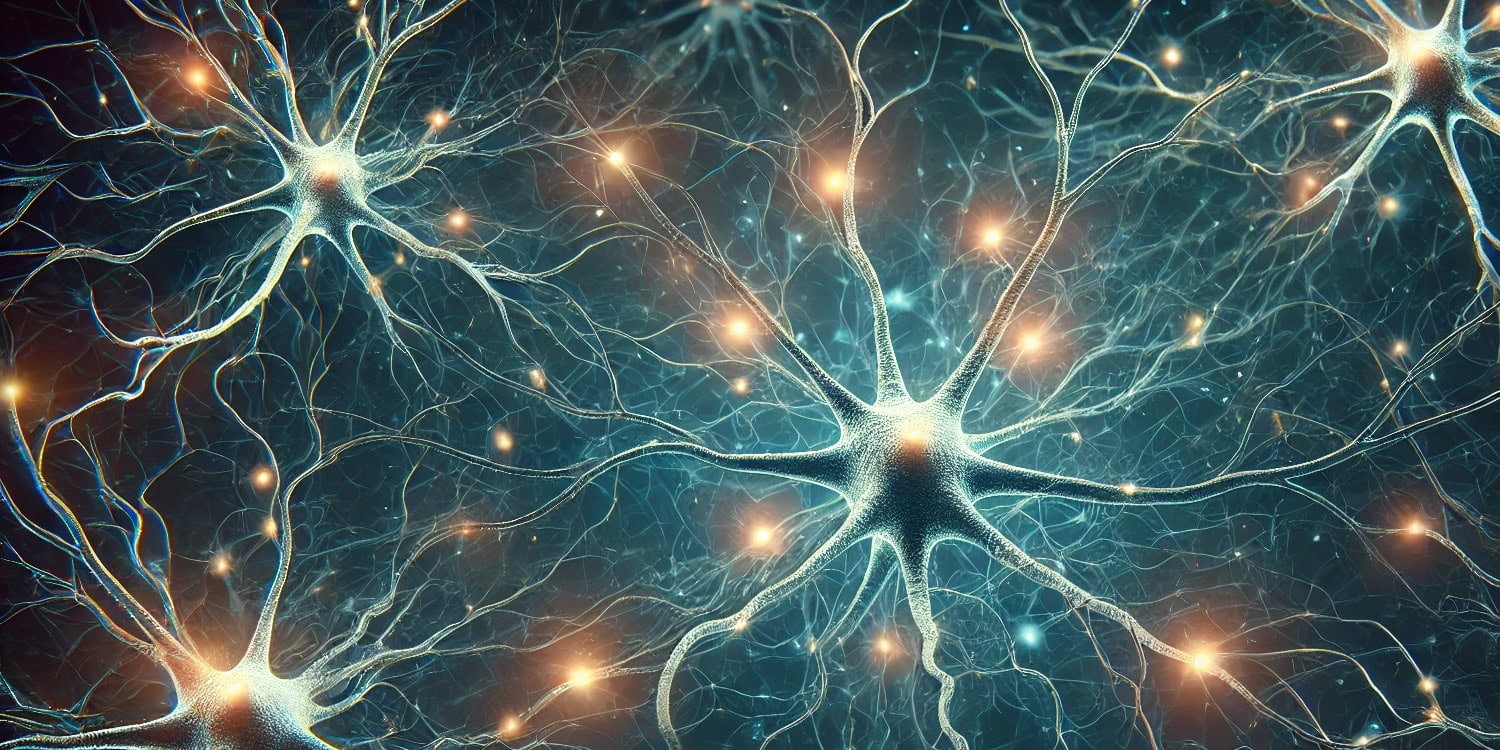A team of scientists has made a significant discovery about how the brain retains long-term memories. They identified the molecule KIBRA, which acts as a “glue” to anchor PKMζ, an enzyme critical for strengthening synaptic connections between neurons. This interaction ensures that memories are not lost as brain proteins degrade and regenerate, offering a deeper understanding of memory stability. The findings have been published in Science Advances.
The scientists were driven by a long-standing question in neuroscience: how can memories last for years or even decades when the molecules in our brains are constantly being replaced? Neurons store information in the strength of synapses, but the proteins and molecules in those synapses are unstable and degrade after just a few days. This creates a puzzle—if the building blocks of memory are so short-lived, what allows us to maintain long-term memories?
The idea that certain molecular interactions might provide stability to memory storage has been around since 1984, when Francis Crick proposed that continuous interactions between proteins might maintain synaptic strength over time. This new study sought to explore this hypothesis further, focusing on the role of PKMζ and how its interaction with another molecule, KIBRA, might contribute to the stability of long-term memory.
“I have been interested in memory since I was a little boy. I also had the sense that there were always deeper, simpler levels of understanding for any mysterious process, and I was driven by curiosity to find the deepest for memory,” said study author Todd C. Sacktor, a distinguished professor at SUNY Downstate Health Sciences University.
Sacktor explained that in college, he became interested in understanding how memory is stored at the molecular level, focusing on the persistent strengthening of synapses during learning. During his neurology residency at Columbia, he worked in James Schwartz’s lab, which guided him toward discovering PKMζ, an enzyme that strengthens synaptic connections.
“The rest was simply trying to figure out what PKMζ did and how it worked,” Sacktor continued. “Ultimately, for memory to last years, i.e., beyond the lifespans of individual molecules, we realized PKMζ had to have a partner, which is the discovery presented in this paper.”
André Fenton, a professor of neural science at New York University and another of the study’s principal investigators, added that he was draw to this research because he is interested in uncovering the fundamental processes underlying our subjective experience.
“While experience requires complex brain activity to process information, I have long thought that our concept of memory is essential to this processing, not merely for storing what has already happened but also for generating expectations and beliefs that influence, if not dictate, subsequent experience,” Fenton said. “While it has always been a fascinating problem to work out how memory can persist for years when the constituent protein components only last days-weeks, work that challenged some of our prior findings and understanding pointed to a solution.”
To explore the connection between KIBRA and PKMζ, the researchers used male laboratory mice. The scientists conducted a series of experiments involving hippocampal slices, a region of the brain critical for memory, and various techniques such as proximity ligation assays and confocal microscopy to visualize the molecular interactions between KIBRA and PKMζ.
They also used genetically modified mice lacking PKMζ to see how memory maintenance differed when this enzyme was missing. In addition, behavioral tests, such as spatial memory tasks, were used to assess the impact of disrupting the KIBRA-PKMζ interaction on memory retention.
One key experiment involved applying a drug called ζ-stat, which blocks the interaction between KIBRA and PKMζ, to see if this would disrupt the stability of synaptic potentiation and long-term memory. Another experiment introduced a peptide called K-ZAP, which mimics KIBRA’s binding site and interferes with its ability to anchor PKMζ, further testing the importance of this interaction.
The study found evidence that KIBRA plays a vital role in stabilizing PKMζ at synapses, effectively creating a “persistent synaptic tag” that helps maintain long-term memory. The researchers found that when synapses are activated during learning, KIBRA binds to those synapses and helps PKMζ stay attached. This connection ensures that the synapses remain strong, even as other molecular components degrade and are replaced.
“For the first time, we have a fundamental biological understanding of how memory can last for years, perhaps even decades,” Sacktor told PsyPost.
Memories are stored by the interaction of two proteins: a structural protein, KIBRA (green), that acts as a persistent synaptic tag, and a synapse-strengthening enzyme, protein kinase Mzeta (red). Drugs that disrupt the memory-perpetuating interaction (other colors) erase pre-established long-term and remote memories. (Credit: Changchi Hsieh)
More specifically, they observed that when ζ-stat was used to block the KIBRA-PKMζ interaction, it reversed the potentiation of synapses that had previously been strengthened during learning. This effect was selective, impacting only the activated synapses that were involved in memory formation, while leaving unactivated synapses unaffected. This indicates that the KIBRA-PKMζ interaction is crucial for maintaining the strength of memory-related synapses.
In behavioral tests, disrupting the KIBRA-PKMζ interaction in mice also led to a loss of long-term memory. Mice that received ζ-stat injections after learning a spatial memory task were unable to recall the location of a shock zone in subsequent tests. Interestingly, this effect was not seen in genetically modified mice that lacked PKMζ, further confirming that KIBRA’s interaction with PKMζ is essential for memory maintenance.
The researchers also found that this molecular interaction is not just important for short-term memory, but can maintain memory for weeks. Even when PKMζ was degraded over time, the KIBRA-PKMζ complexes remained at the synapses, suggesting that new PKMζ molecules continue to be synthesized and incorporated into the same synaptic locations, allowing memories to persist long after the initial learning.
“The persistent KIBRA-PKMζ interaction explains how memory can last for a lifetime, something humans have been trying to understand for a very long time, at least since Plato wrote about it,” Fenton said.
“But there’s more if we connect some dots. A human brain is made up of about 100 billion neurons, each of which receives input connections at synapses from about 10 thousand other neurons. When we have any experience we use the neural circuits of our brain to process information defined by the flow of electrochemical activity through subnetworks of those connections between millions of neurons. Memory may be the result of experience changing those connections, typically a very small (1%) subset. How does an experience today persistently change connections so memory of the experience last years?”
“Our work determined that memory is the result of an active, ongoing biochemical process in which the kinase action of a persistently active catalyst protein, PKMζ is targeted to the experience-activated connections within the neurons that constitute the information processing connections of the experience-mediating neural circuit,” Fenton explained. “PKMζ is generated in an activated neuron and because KIBRA, a targeting molecule accumulates at the activated connections, it directs the kinase action of PKMζ to those specific locations.
“The KIBRA-PKMζ interaction persists because the KIBRA-PKMζ complex is more stable than the individual protein components and like the paradox of Theseus’ ship persisting despite all the planks being replaced, the KIBRA-PKMζ complex persists even though the individual protein components are continually replaced.”
“The takeaway is that experience activates neural circuits that process information and that processing creates memory, which depends on an elegant continually active biophysical process, which at once stores information and by storing that information also changes the neural circuit and with it the information processing within which future experience will occur,” Fenton told PsyPost. “Memory is about the future.”
Although the study offers strong evidence that KIBRA is crucial for sustaining long-term memory by stabilizing PKMζ at synapses, certain limitations remain. The researchers acknowledge that not all forms of memory may rely on this molecular interaction. For example, the study found that some types of memory, such as contextual fear memory, are maintained through PKMζ-independent mechanisms. Understanding how these different systems operate will require further investigation.
“There are some memories that are not stored by PKMζ,” Sacktor noted. “Does KIBRA play a role in these by interacting with a different, but related synapse-strengthening molecules, or is there completely different mechanisms?”
Another limitation is that while KIBRA helps explain how memories can last for years despite molecular turnover, the study did not fully explain how the process of memory formation begins—specifically, how KIBRA is initially recruited to the synapses involved in memory formation. This will be an important area for future research.
The researchers also plan to explore the potential applications of their findings for treating memory-related disorders. Since the KIBRA-PKMζ interaction is so critical for memory stability, drugs that target this process could potentially be used to enhance memory in conditions like Alzheimer’s disease or to weaken harmful memories in conditions like post-traumatic stress disorder.
“We wish to explain how the process of memory persistence is initiated,” Fenton said. “In other words, how does the KIBRA appear and accumulate; how are the memory-changed connections arranged within a neuron and between neurons; how specifically does the KIBRA-PKMζ mediated change in connections change information processing; and how can this fundamental neurobiology be used to improve outcomes in disorders like Alzheimer’s disease, and mental illness?”
“In any fundamental discovery in biology, there will be ‘low-lying fruit’ in medicine—diseases that can now be treated,” Sacktor said. “Often which diseases cannot be predicted ahead of time. I am curious which psychiatric or neurological diseases it will be for the discovery of KIBRA-PKMζ’s role in memory.”
“Doing this work is painstakingly slow and careful, and at times frustrating but has always been joyous!” Fenton added.
The study, “KIBRA anchoring the action of PKMζ maintains the persistence of memory,” was authored by Panayiotis Tsokas, Changchi Hsieh, Rafael E. Flores-Obando, Matteo Bernabo, Andrew Tcherepanov, A. Iván Hernández, Christian Thomas, Peter J. Bergold, James E. Cottrell, Joachim Kremerskothen, Harel Z. Shouval, Karim Nader, André A. Fenton, and Todd C. Sacktor.




